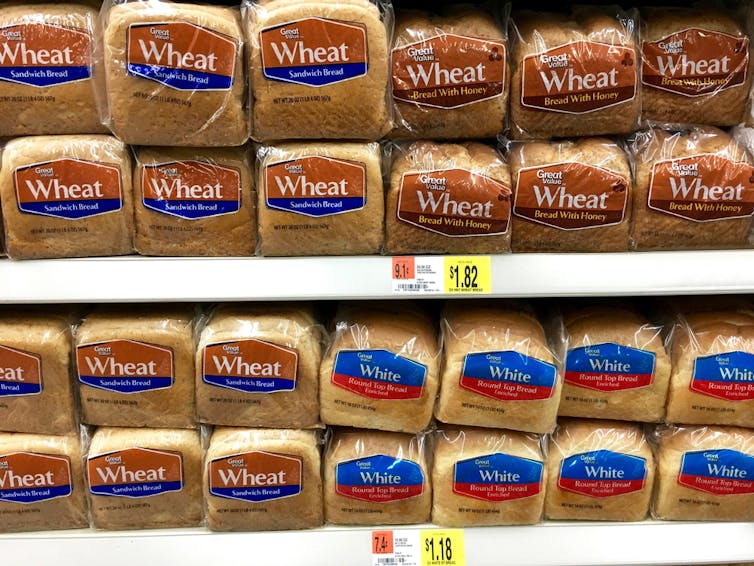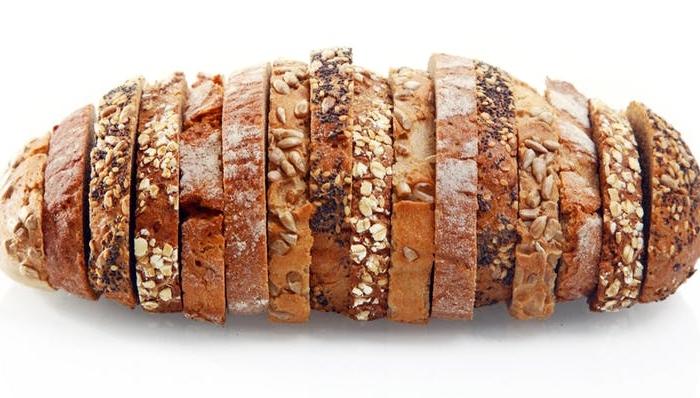White bread is made from wheat that has had the germ and bran removed, thereby reducing the fiber, B group vitamins, vitamin E and minerals such as iron, zinc, magnesium, and phosphorus.
Wholemeal
Wholemeal bread is made from whole grains that have been milled to a fine texture, giving a plain brown appearance. Wholemeal flour contains more fiber than white flour. Wholemeal bread also contains more vitamins and minerals than many white breads but has a higher GI than whole-grain bread.Multigrain
Often multigrain bread is made from white flour with some added grains. Despite this, multigrain breads tend to have more fiber and a lower GI than white bread, resulting in longer lasting energy.Whole Grain
Whole-grain bread contains the entire grain: the bran (outer layer), endosperm (starchy middle layer), and germ (nutrient-rich inner part). It’s a rich source of carbohydrates, protein, unsaturated (good) fats, vitamins, and minerals, as well as three types of fiber: soluble, insoluble, and resistant starch. Whole-grain bread has a dense wholemeal flour base and well as lots of grain and seeds. Look for “whole grain” in the ingredient list.
Rye
Rye bread has a heavier texture due to a lower gluten content (but it’s not gluten-free). Whole-grain rye with added grains has a higher fiber and vitamin content than light rye and has a lower GI, as does rye sourdough. Whole-grain rye is a good choice for health and even light rye is better than white.Sourdough
Sourdough bread has a lower GI due to the higher acidity level. Fiber, vitamin, and mineral levels vary with the flour used, with whole-grain sourdough being the preferred choice. Be sure to choose an authentic sourdough, as some are faux sourdough and contain yeast rather than the traditional starter.High-Fiber White
High-fiber white breads are breads that have fiber added to them. This makes them a better choice than regular white bread especially for children (or big kids) who won’t eat whole-grain bread.Gluten-Free
Gluten-free breads are made from an alternative grain to wheat, so as to avoid the wheat protein gluten. Traditionally, gluten-free breads have had a lower fiber content and higher GI than their wheat-containing counterparts, although, there are now some with added seeds.Low FODMAP
Low-FODMAP breads have recently hit the market. These breads are suitable for people such as those with irritable bowel syndrome, who are sensitive to a group of carbohydrates known collectively as FODMAPS. FODMAPS are found in a number of foods including wheat. These breads still contain gluten and are not suitable for people with coeliac disease.All bread is not created equal. Ideally look for heavy, dense breads with lots of grains and seeds. Ingredient lists on food labels are written in descending order so look for words such as whole grain, kibbled grain, nuts, and seeds at the beginning of the ingredients list. Foods with more than 4 grams of fiber per serving are considered a good source of fiber.
Go for a whole grain, whole-grain rye or authentic sourdough breads (particularly rye or grain sourdough). The soft fluffy white breads are best left for the occasional grilled cheese sandwich; ideally not part of your regular diet.


Friends Read Free